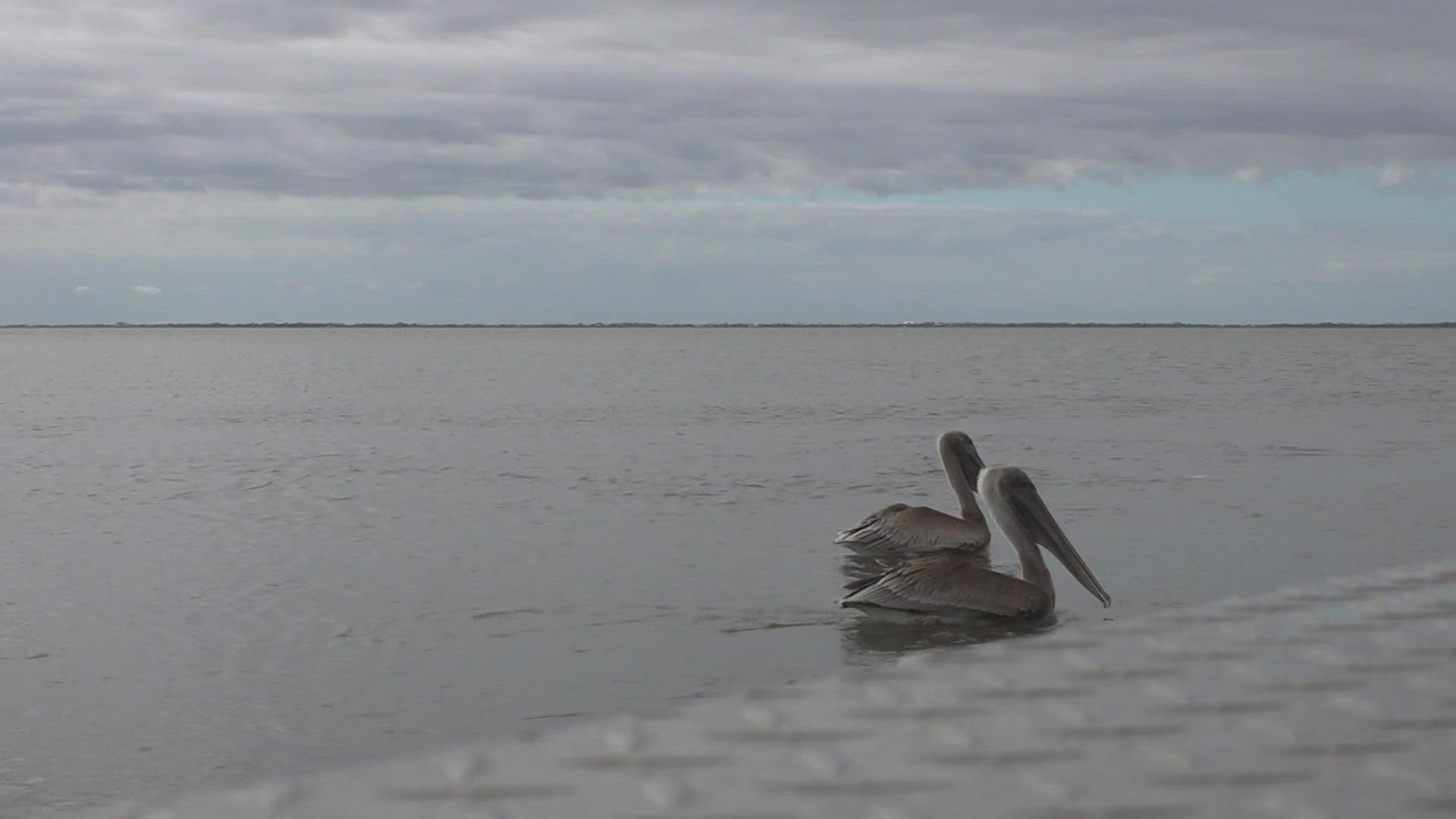NEW ORLEANS — Coastal New Orleans is losing a football field of wetlands every 100 minutes.
That's 100 yards every 100 minutes.
The wetlands have a number of benefits including hurricane projection.
The New Orleans East Land Bridge is no different but it is on pace to vanish over the next half-century.
As captain Paul McIntyre motored along the waters on Lake St. Catherine he admitted there is no other place he’d rather be, it's paradise.
“I grew up in a camp right on Lake Catherine. This was my playground as a kid. It’s something that most people don’t get to enjoy on a regular basis or ever see in their lives," said fisherman Captain Paul McIntyre.
But McIntyre's paradise is changing.
“Where we are right now in the boat used to be land. Lake Catherine was a very productive area as far as fishing, hunting and you know, now it’s gone," said McIntyre.
Protecting McIntyre's home and about a million others from storm surge during a hurricane is a strip of land known as the New Orleans East Land Bridge.
“It’s a critical area of land just to the east of New Orleans that is very important for protecting all of the people around Lake Pontchartrain, so like 1.5 million or so people,” said Dinah Maygarden, University of New Orleans.


The land bridge is the last barrier between New Orleans and the Gulf of Mexico. It is on track to vanish over the next 50 years.
“Our land has been subsiding for various reasons because of the levees that we built, there is a natural subsidence process so land is sinking. We have also built channels, Martine channels from oil and gas that have brought salt into a freshwater system, it’s really damaging to all of these wetlands," said Barbara Johnson, Great Delta Tours.
Hurricane protection isn’t the only thing at risk here. Land loss has also changed the waters McIntyre has fished his whole life.
“It’s disturbing to me mainly because the hydrology of the water changes because it allows saltwater to get where freshwater is and freshwater to get where brackish waters would be and as an oyster fisherman, the brackish water is what is important,' said Captain McIntyre.
Work is underway to restore the landbridge. There are several different restoration projects from I-510 to St. Tammany Parish. The projects aim to work together to create speed bumps to slow down storm surges and restore the land.
“We’ve got a series of restoration projects, some have been completed, some are about to come out of the ground and others are planned," said Barbara Johnson, Great Delta Tours.
Barbara Johnson with Great Delta Tours, a New Orleans-based ecotourism company, organized a trip recently to show off one spot along the landbridge slatted to be restored.
“They are going to dredge mud from the bottom of lake St. Catherine and Lake Borge and pumping that into the area we want to create marsh," said Barbara Johnson.
Google Earth shows just how much land has been lost here since 1986 but the restoration projects look to change that.
Mcintyre is optimistic that it will make a difference.
“I will see land in a year, I will see the protection in a year and to me, that’s what is important because as the storms come you lose so much land so fast…" said McIntyre.
There are two restoration projects happening right now along the land bridge. There is also a huge $100 million projection that is in the early design stage but funding has already been approved from the national fish and wildlife foundation.

